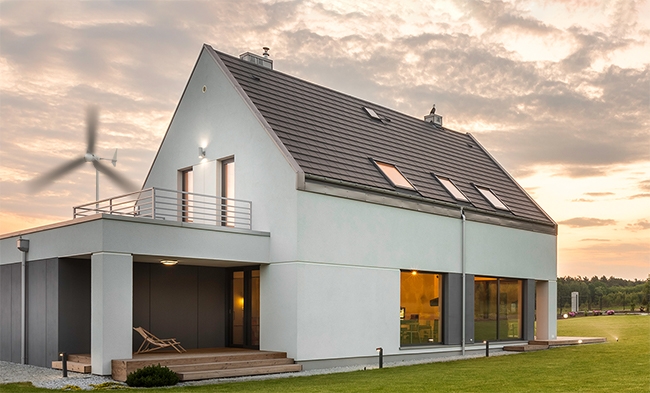The increasing interest in renewable energy has led many homeowners to consider wind turbines as a viable option for generating clean, sustainable power. Choosing the right wind power turbine for your home involves several factors, including location, turbine size, type, and energy needs. In the following, we will help you through the essential steps to make an informed decision.

1. Assess Your Location
The first step in choosing a wind turbine is to evaluate the wind resources at your location. Wind turbines are most effective in areas with consistent and strong winds. You can determine the wind potential in your area by consulting wind maps, local meteorological data, or conducting an on-site wind assessment.
Average wind speed. Most small wind mill turbines require an average wind speed of at least 10-12 mph (16-19 kph) to generate power efficiently. Wind speed is a key factor in determining the amount of electricity generated by a wind turbine generator. Generally speaking, the higher the wind speed, the higher the power generation capacity of wind turbines. Therefore, when selecting a wind turbine, the local average wind speed and wind speed distribution need to be considered. Usually, the rated wind speed of a wind power generator should be slightly higher than the local average wind speed.
Wind direction. The stability of the wind direction is also an important factor in choosing a wind power turbine. If the wind direction changes greatly, you need to choose a turbine with strong resistance to wind direction changes, or install equipment that can automatically adjust the wind direction.
Wind frequency. Wind frequency refers to the frequency of wind in a certain direction in a specific period of time. Knowing the local wind frequency can help determine the best location and orientation for wind turbines.
2. Determine Your Energy Needs
Before selecting a wind power generator, you need to estimate your household’s energy consumption. This will help you choose a turbine with the appropriate capacity to meet your needs.
- Review past bills. Look at your electricity bills over the past year to determine your average monthly and annual energy consumption, measured in kilowatt-hours (kWh).
- Identify peak usage times. Determine when your energy consumption is highest, as this will influence the size and type of turbine needed.
- Consider future changes. Take into account any future changes that might increase or decrease your energy use, such as new appliances, electric vehicles, or energy efficiency improvements.
3. Choose the Right Type of Wind Turbine
There are two main types of wind turbines suitable for home use: horizontal-axis wind turbines (HAWTs) and vertical-axis wind turbines (VAWTs).

a. Horizontal-Axis Wind Turbines (HAWTs):
A horizontal wind turbine is a popular choice for residential wind energy systems due to its efficiency and effectiveness. This type of turbine features blades mounted horizontally, aligned parallel to the wind flow, which allows it to capture and convert wind energy into electricity more efficiently compared to vertical-axis designs. Typically, HAWT wind turbines are mounted on tall towers to reach higher wind speeds and avoid turbulence from obstacles. For home use, these turbines can be scaled down to suit residential energy needs while still providing substantial power generation. Their design usually includes three blades, which rotate around a horizontal axis and are optimized for maximum aerodynamic performance.
b. Vertical-Axis Wind Turbines (VAWTs):
Vertical-axis wind turbines are an increasingly popular choice for residential wind energy systems due to their compact design and efficiency in urban and suburban environments. Unlike traditional horizontal-axis wind turbines, Vertical axis wind turbines have blades that rotate around a vertical axis, allowing them to capture wind from any direction. This omni-directional capability means they can operate effectively in turbulent or gusty wind conditions often found near buildings or trees. Additionally, Vertical wind generator typically require less maintenance because their moving parts are located closer to the ground, simplifying repairs and inspections. They are particularly suited to areas with lower average wind speeds, where traditional wind turbines might be less effective. By generating their own electricity, homeowners can achieve greater energy independence and lower their carbon footprint.
4. Evaluate Turbine Size and Capacity
The size and capacity of a windmill turbine are critical factors in determining its suitability for your home. Here are some key considerations:
- Turbine capacity. Measured in kilowatts (kW), it indicates the maximum power the turbine can generate. Residential turbines typically range from 100W to 10 kW.
- Rotor diameter. Larger rotors can capture more wind and generate more power but require more space and higher wind speeds.
- Tower height. Taller towers allow turbines to access stronger, more consistent winds at higher altitudes. However, they also require more robust foundations.
Choosing the right wind electric turbine for your home is a multifaceted process that requires careful consideration of your location, energy needs, turbine type, and budget. By thoroughly evaluating these factors and consulting with professionals, you can make an informed decision that will provide sustainable energy and potentially significant cost savings over time. Inverter Online Shop provides a variety of wattage wind turbines for you. Investing in a wind power turbine not only helps reduce your carbon footprint but also contributes to the broader adoption of renewable energy solutions.
